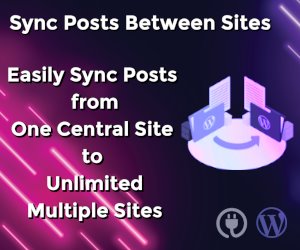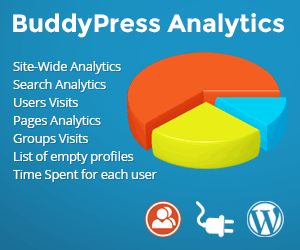Nimble guide to WordPress speed optimization

In this nimble WordPress speed optimization guide you will find out what impacts the websites loading time and how to make it blistering fast.
Let’s get down to business.
What Impacts the Load Time of Website
Following are the 12 important things of WordPress speed optimization, how you can check and fix these things, which are causing issues.
1. Use File Minification
Reducing the file size by chopping off the things that don’t affect the working of the file is file minification.
Grasp the JS, CSS, HTML files of your website and think about the unnecessary stuff in them.
- Replace color values like rgba(0,0,0,0) with transparent.
- Try to add short and descriptive comments instead of using long comments.
- Replace true or false by 1, 0 or !0 or 0.
- Rename long variables.
2. Images Must be Optimized
Images are used on websites for all sorts of reasons:
- To engage your audience
- To display products and services
- For ads
Images are often used because they stand out.
But there is a downside to images if they are not optimized.
They make your website slow!
The solution to overcome this problem is image Compression.
You have to reduce the image size without losing the image quality.
Trim image size in WordPress while uploading images without losing their quality.
You can also use the plugin option. Here are some best plugins for you which will automatically decrease the image size without reducing the image quality.
For the most part we use TinyPNG to compress to optimize images before uploading to our websites.
It’s very easy to use. All you have to do is drag and drop the images on their site, which will automatically compress the images for the web use.
Once compressed, you can download the images and upload these compressed images to your website.
You can pick any of the above plugins of your choice to optimize your images and increase the speed of your website.
3. Keep the Page Cache Enabled
Web caching is the most helpful technology out there, which help to deal with WordPress speed optimization.
It helps to:
- Improve website speed
- Get a better SEO score
- Increases conversion rate
- Improves user satisfaction
It is pretty simple to understand how caching works.
When a browser requests to access to a web page it has to fetch a lot of time-consuming things.
When cache is enabled, once a web page is visited through a browser sites files gets stored on the server in the temporary storage area so that the next time a person want to access the same page the information is readily available without unnecessary load.
This will increase the page speed and user satisfaction as well as reducing the load on your server.
4. Minify HTML, JavaScript, and CSS
WordPress websites are a combination of HTML, CSS, and JavaScript files.
The term minify here means to remove unnecessary characters from these code files.
This will help cut of some load of your page speed.
In order to do this, minifying the files is the best approach. You can do this in two ways.
You can install plugins like
These plugins automatically minify your code for you.
The other option is that you do it yourself, for which you can use online tools
To make your code light you should try to:
- Avoid adding long comments
- Extra line breaks
- Extra spaces
- Block delimiters
It will improve the speed of the website.
This won’t increase your website speed drastically. But when it comes to website speed any little bit helps!
5. Gzip Compression Should be Enabled
To improve website speed, reducing web page size is critical.
You can reduce your page size by enabling gzip compression which will:
- Reduce web page size
- Improve resource download speed
- Reduce clients data usage
You can enable Gzip Compression in two ways.
- Enable Gzip Compression plugin
- Adding code to our .htaccess file.
6. Try to Concatenate the Files of Website
Always try to reduce the server requests. I think it’s better to download one large file instead of downloading several small files.
Where possible, try to merge the small files. That’s what the concatenate technique is.
Try to merge HTML, CSS, and JavaScript files.
You can use Autoptimize plugin with automatically combines all your HTML, CSS, and JavaScript.
7. Content Delivery Network (CDN) Usage
If you have global customers, it is difficult to guess, which part of the world your customer will access your website. Anyone from any part of the world could access your website.
Suppose, the server that hosts your website is somewhere in the States and a person from China wants to access your website.
Obviously, it will take more time to load because of the distance the data has to travel.
The best solution for this is Content Delivery Network (CDN).
CDN host your static files like CSS, HTML, JavaScript, images on different servers.
It will boost-up the loading time.
CDN is of two types.
- Traditional pull CDN
It saves a copy of all of your content and media, still when the client requests it made directly to your hosting provider. - Reverse Proxy CDN
When the client requests it behaves like an intermediary server between the client and the host.
Common traditional Pull CDN are:
Popular reverse Proxy CDN are:
8. Try to Decrease the Requests From the Server
Whenever a user requests any resource that request is placed on the server.
It’s not going to be an issue if you get a few user requests but when many users try to access the resource all at once, it slow-downs the site.
These tips will help you out to reduce the requests from the server.
- Combine CSS files.
- Load JavaScript files asynchronously.
- Show less number of posts on pages.
- Try to reduce unnecessary external resources.
- Reduce the number of images from your pages and posts.
- Remove unnecessary plugins, themes from your website.
- Enable lazy loading in your site it will delay loading images.
- Grade your website’s performance to find the root problem.
- Split the pages and posts if it had huge content or have a lot of comments.
Follow these tips and reduce the requests on the server. It will improve the speed optimization factor. You can check the page request number on the Website Grader.
9. Your Website Tech Must be Updated
Whatever technology you are using on your website must be updated.
- HTML
- CSS
- WordPress
- PHP
- Plugins
- Themes
- Other web technologies
They are all updated for some reason. New features, speed enhancement and other factors.
Using older versions puts you at security risk and even slow down your website.
It is important to keep everything on your website updated.
10. Disable WordPress Bloat
Let’s face it – there are some features in WordPress which are unloved and rarely used. We’d love to see WordPress cutting out some bloat to make core lighter, and as a consequence easier to use.
WordPress by default can enable a number of back-end and front-end features which can lead to performance issues, but there is a plugin to easily remove the bloat.
Disable Everything plugin will disable all unnecessary WordPress features and speed up your website elegantly.
You can select every WordPress feature that you do not need and simply disable it.
Plugin is made to be lightweight so that it does not affect websites loading speed.
Best of all there is also a free version to try and if you like it, you can further purchase a full Pro version.
11. Always Use Quality Hosting for Your Website
There are thousands of hosting companies out there.
Reliable and high-performing hosting is necessary for the success of your website.
Especially when it comes to website speed, your website hosting can make or break your site.
Being the owner of a website, you need to remember. Every second matters in WordPress optimization.
12. WordPress Plugins for Speed Optimization
On top of all the steps we have mentioned above, you can improve your website speed by using a WordPress speed optimization plugin.
Disable Everything is the most elegant plugin for WordPress speed optimization.
It will disable all unnecessary WordPress features and speed up your website elegantly.
You can also try FREE plugin version before purchasing the premium one!
Some features that could be fully disabled with the Disable Everything plugin:
- Comments
- Post Revisions
- Frontend Search
- Lazy Loading
To find out more about Disable Everything plugin, please click here.
The following are some other famous speed optimization plugins.
Conclusion
Don’t forget, a slow-loading website can cause users to lose their interest in your website and move on to other sites.
We tried our best to emphasize the importance of WordPress speed optimization, explained the issues with solutions that will improve the speed of your website.
We hope you have found this guide helpful.
Are you still here? What are you waiting for? Go ahead, log into your website and improve the speed of your website.
After completing the steps, don’t forget to test your website speed and share your results and experiences with us below in the comments.
We will be happy to see the improved speed of your website.


